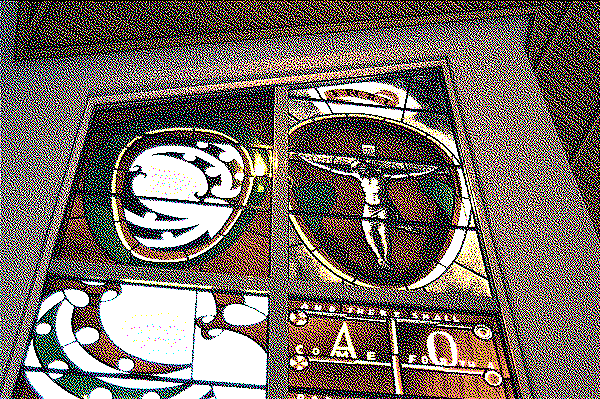Shrines of Light
Visiting Shane Cotton’s West Windows

Today, the scripture is fulfilled in your hearing.
THE REVEREND of Holy Trinity Cathedral spoke these words to the congregation gathering to take the Eucharist. I am unsure whether the scriptures could be fulfilled in my hearing, which felt dulled from the previous night’s bar work.
I came for the stained glass, a medieval artform arranged to embody God’s first words: let there be light. The sermon was the price of admission. In 1997, Shane Cotton (Ngāpuhi, Ngati Rangi, Ngāti Hine and Te Uri Taniwha), Robert Ellis, and Nigel Brown, were commissioned to reflect the symbolism of New Zealand in Christian glass; these Māori and Pākehā artists extend the mediaeval tradition to our colonised islands.
The parishioners move slowly at the end of the sermon, and I gather beneath the West Windows (2003) of Shane Cotton. Cotton tends to the Old Testament, and retraces the journey of a lost tribe through the desert. The painter evokes his own maunga as the shadow of Mount Sinai, and crafts a biblical retelling laden with loss. The Jewish education of my childhood struggles to interpret the window's many biblical references, and I cannot speak to its invocations of te ao Māori. Knowing what I do not know beneath the glass, the impression remains one of exile. The light filtering through the glass illumes Cotton’s hills of prophecy, the silhouettes radiant even in the darkness.
The biblical scenes of West Windows are adorned in the iconography that had—by the time of the commission—all but vanished in Cotton’s painting. Here, Cotton’s rear-view mirror appears as a swan song, a final iteration of caged land, prophetic marks, and symbols adorned like stitched badges.
Anglican and Māoritanga principles of light are arranged in the presence of one another, two cosmologies adhering to one plane. This is not a familiar representation of the bicultural promise, but a rather more tense arrangement—unceded land and Christian power. Cotton reaches for metaphysical resonance in a moment of post-colonial practice, detailing the interaction between Christianity and Māori cosmology. In the language of ash and sand, Cotton slips between Latin and Reo, and imbibes a prayer as he recites from his own bible, kia marama.
Let there be light.
I THINK BACK to mediaeval origins, and to the parishioners who gathered beneath the glass. Within the tradition of stained glass, knowledge was imbibed in sensorial terms. The mediaeval parishioner gazed on the glass as divine light, an alchemical composite arranged in biblical narrative. Stained glass is, afterall, art for the illiterate.
These are pictures to be read, to be felt, in spite of our illiteracy—and there are many forms of illiteracy these days. I feel comforted beneath the glass. The biblical message is taken in light, more willingly than I received the sermon.
The Reverend had spoken of an archeological dig in Mandela, the birthplace of Mary Magdalene. Researchers have discovered the remnants of a synagogue built 2000 years ago, in the lifetime of Jesus and his disciple Mary. The room in ancient Palestine was small, simply furnished with stone benches inferring an intimate presence for those in prayer. Set into the eroding walls were small openings, windows to let in the light.

IN A GARDEN SPOT behind the Cathedral, a warm thought carries me. We’re all fused to the light of our own creations; waiting in the space between Rangi and Papa, the substance drawn from a void. It is light that immediately precedes the world, light that announces our presence, and light that allows us to reimagine that which we do not yet know.
2022-07-01